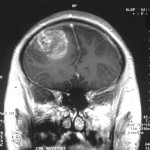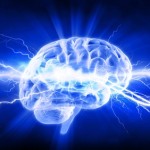Cerebral Perfusion Pressure in Intracerebral Hemorrhage

Intracerebral hemorrhage accounts for approximately only 12% of all strokes, but it is one of the most disabling forms. The high rate of morbidity and mortality associated with intracerebral hemorrhage has prompted investigations for new medical and surgical therapies. This syndrome occurs when a blood vessel within the brain ruptures, allowing blood to leak inside the…
Biomarkers of Tumor Vascularity in Glioblastoma Multiforme

Increased vascularity is a pivotal event in tumor progression and has prognostic meaning in numerous cancers. Recently developed agents have been designed to target and inhibit angiogenesis factors, preventing the formation of new blood vessels that supply the tumor and allow cancer cells to survive and multiply. Glioblastoma multiforme is the most aggressive and infiltrative type of…
Deep Brain Stimulation for Gait Disturbance in Parkinson’s Disease

Parkinson’s disease is a progressive disorder of the nervous system caused by the loss of dopamine-producing brain cells. Gait disturbance and balance impairment are some of the most incapacitating symptoms of this condition. Several clinical studies have shown that electrical stimulation of the pedunculopontine tegmental nucleus (PPTg), an area of the brain involved in many…
Extra-Frontal Alterations in Juvenile Myoclonic Epilepsy

Several studies using state-of-the-art imaging techniques have revealed that juvenile myoclonic epilepsy, a form of epilepsy that starts in childhood or adolescence, might be associated with microstructural and functional changes in several brain regions. In fact, these abnormalities have been found not only the thalamofrontal network, but also in temporal and parieto-occipital areas. To further understand these…
Single Neuron Unit and Local Field Potential Activity in Visual Memory

Neurons are electrically excitable cells that encode information and transmit it to neighboring neurons through synaptic connections. Current neurotechnologies are focusing on finding new ways to simultaneously record the activity of both single neurons and connected neural networks. A recent study from the Department of Neurology at Mayo Clinic explored and compared single neuron spiking…
Magnetic Resonance Spectroscopy for the Assessment of Temporal Lobe Epilepsy

Magnetic resonance imaging (MRI) offers valuable structural information about organs and tissues in the body, providing high-resolution images that help diagnose a wide range of conditions and dysfunctions. However, data underlying functional activity of the structure is often limited. Proton magnetic resonance spectroscopy (MRS) is a non-invasive, in vivo technique complementary to MRI that interrogates…
Corpus Callosum Development in Autism is Different for Girls

Autism is a global problem with skyrocketing incidence rates. The CDC reports that 1 in 68 children born today will be diagnosed with autism spectrum disorder (ASD). The incidence for boys is 1 in 42, so the majority of research studies has focused on males. This has led to a poorly understood and little-studied population of…
Immunotherapy Strategies in the Fight against Glioblastomas

Of the more than 120 types of brain tumors that have been identified, glioblastoma is the most aggressive and infiltrative. This particular cancer starts in the cerebrum, the largest part of the brain, and is aggressive, quickly invading and spreading into healthy brain tissue. Recent improvements in technology and discoveries in the field of immunology suggest…
Differentiating Temporal Lobe Epilepsy through Functional Neuroimaging

Epilepsy is a brain disorder in which the normal pattern of neuronal activity becomes disturbed, causing changes in behavior, sensation or awareness and sometimes convulsions, muscle spasms and loss of consciousness. These symptoms, which go under the umbrella of seizures, may last from a few seconds to a few minutes. This disorder may result from events…
Quantifying White Matter Development from Infancy to Early Adulthood

Research focusing on developmental changes of the human brain over time has dramatically advanced due to the improvement of novel imaging techniques. Diffusion tensor imaging (DTI) allows for an accurate analysis of the morphological modifications of white matter tracts connecting different brain regions. This technique provides for the visualization and quantification of the diffusion of water molecules in biological…
 AnalyzeDirect
AnalyzeDirect